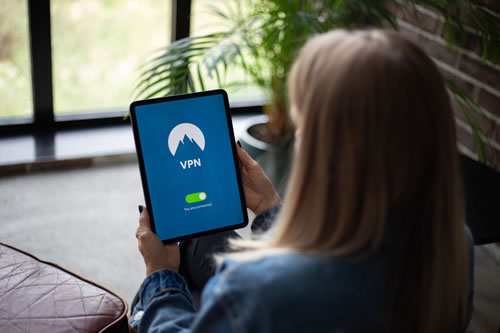It is happening now; everyone is faced with millions of people no longer in a conventional office. For most organizations, this lifestyle change is significant, as we all adapt to the new norm of working from home. With all these changes come the need to support a remote workforce, often in companies where remote working capabilities have not yet been established.
Hence comes the challenge for CIOs and IT professionals to find the best solutions on short notice in areas such as general communication, including instant messaging or Slack, online meeting solutions like Zoom or Skype, and access to applications and data. With all these remote solutions being implemented quickly, security cannot afford to be overlooked. Remote employees are typically not behind on-premise protections such as web gateways, intrusion detection systems (IDSs), and firewalls. Companies can lose much-needed visibility and protection levels.
In a recent Gartner report, “Coronavirus (COVID-19) Outbreak: Short- and Long-Term Actions for CIOs,” they urge CIOs to ensure that everyone who can work from home does so. Gartner recommends sourcing digital collaboration tools with security controls and network support. As we examine multiple industries, everyone is faced with new technical challenges, and the media and entertainment industries are no exception. If anything, working from home presents more significant obstacles. M&E deals with huge media assets that need to be securely and quickly available to users over the internet.
Table of contents
- Post-production video
- Hardware solutions in short supply?
- Moving media
- Software solutions that work …or not
- File collaboration – together forever
- To cloud or not to cloud, that is the question
- Remote is here to stay
- Get a handle on remote connectivity
- Modern cloud innovation brings economies of scale and affordability
Post-production video
In post-production, editors are dealing with massive files that need to be accessed and shared with colleagues. There are no more “water cooler” discussions. Most remote workers
struggle with bandwidth issues and are not used to paying for expensive upload capability. They have not previously required this type of access. To work on large video files, editors download digital assets overnight, hoping that the data files will be complete by morning. Production houses are trying everything that might work, but these are typically not solutions that can be considered long-term. When dealing with a new distributed workforce, gaining secure and quick access to data is imperative.
For an industry that is always “on,” its most significant event of the year, the NAB (National Association of Broadcasters), was unfortunately cancelled. That being said, there is an excellent virtual session (available online) for those craving some of the trends in M&E. A unique group of industry thought leaders was assembled with the pre-NAB Editors Lounge panel discussion. Consistent with the times, much of the panel’s conversation focused on the topic of remote work. Given the abrupt nature of “sheltering in place,” the industry is challenged by providing teams with appropriate data access while also enabling remote collaboration. Production and post-production will be a train wreck if they cannot figure out how to get the infrastructure ready to support this distributed workforce. No one wants to get caught with their pants down. Several key themes that resonate within M&E include limited access to hardware, a lack of technological innovation, and the mounting costs associated with storage and data access.
“We are seeing a sea change in how ‘post’ is done, and we need to get ready for that change.”
Hardware solutions in short supply?
As you well know, everyone is scrambling to set up a work-at-home infrastructure, and hardware seems to be as hard to get as toilet paper or hand sanitiser. According to a recent CRN article, with millions of people working from home, there is a massive spike in technology purchases. Punctuated in a recent interview, Dell CEO Michael Dell told CRN that “demand for work-from-home solutions is very strong.” In addition to outfitting remote employees, production companies face the challenge of distributing media assets to workers, which has always been difficult due to the sheer size of the files.
Moving media
Let’s examine how many production houses manage their media assets and workflows for off-site work. Often, they use a sneakernet, which involves transferring electronic information and physically moving media, such as tapes and USB drives. How does that scale? It doesn’t. And if you have tried AWS Snowball, which utilizes storage appliances designed for secure physical transport, you will need someone in IT to set it up. Snowball is not intended for a beginner. For new remote workers, this presents a whole new set of challenges. Suddenly, editors need a set of technical skills, in addition to their creative expertise.
Software solutions that work …or not
Given the ongoing requirements for data access, some teams might have a corporate Virtual Private Network (VPN). VPNs can work fine across an on-premise, low-latency local area network (LAN), but connecting from a distance results in a bad user experience. The truth is that we are all connecting to data from various locations, and we are seeking a seamless user experience.
There are other options, such as using FTP for file transfer or alternative FTP data transfer technologies like Signiant, but these are designed for large organizations with big budgets. File sync and share solutions, such as CentreStack, Dropbox, and Box, are available, but are they suitable for M&E? Each solution has its own set of limitations. One additional factor in the mix, specific to media and entertainment, is VDI-style solutions like Teradici. However, these are expensive solutions that utilize legacy file transfer technology, which breaks down as file sizes and distances increase.
File collaboration – together forever
Let’s not forget about collaboration. Remember the water cooler reference? How do these solutions enable real-time collaboration on documents, regardless of the file’s or users’ location? People working from home need a solution that provides real-time access to shared data files. Creatives need to create together.
To cloud or not to cloud, that is the question
According to a Hollywood Reporter article, even before the coronavirus pandemic began, production capabilities via the cloud and other remote services had been steadily accelerating as production became more global. These services enable everything from reviewing footage to editing, colour grading, and sound post-production; yet, the cloud still presents its own set of challenges for many production houses.
During the NAB Editors Lounge discussion, the panellists referenced “Lift-and-shift” with AWS. Lift-and-shift is the process of migrating a workload from on-premises to AWS with little or no modification. Lift-and-shift is a common approach for enterprises to migrate to the cloud and can serve as a transitional step toward a more cloud-native architecture. However, for many, “Lift-and-shift” to AWS is not a reality. Some folks said they’d pay 16K for AWS’s on-premises solution. That’s totally out of their budget. According to one panellist’s opinion, “We are seeing a sea change in how ‘post’ is done, and we need to get ready for that change.”
Remote is here to stay
Remote is our new norm, and it’s not going away. According to a recent Gartner CFO survey of 317 finance leaders, 74% of organizations stated that they plan to shift some employees to remote work permanently.
One of the most significant challenges the media and entertainment industry has consistently faced is providing access to large files for distributed teams, freelancers, contractors, and remote workers. The M&E industry is not alone; several sectors, including Architectural, Engineering, and Construction (AEC), video surveillance, and medical imaging, share a commonality. They all have large, complex files, and they all need access to their remote data to be fast, secure, and usually from any location. There are many ways to do this, yet very few of them are convenient, cost-effective, or cyber-secure. New times call for new technology.
Get a handle on remote connectivity
For media and entertainment, particularly in post-production workflows, pay attention to the remote working environments for video editors and post-production houses that are trying to adapt in this new situation. Since there is a challenge to get hardware to remote locations, not to mention the additional costs associated with it, look for SaaS solutions that can be easily and quickly deployed to get your customers up and running. Everyone wants a short learning curve; don’t make your remote users jump through hoops to get to their data. Implement new technology that is minimally disruptive to media workflows, with a low learning curve. While you are at it, start by applying these technologies in your organization to allow everyone to master the features and gain a better understanding firsthand. Enhance your team’s comfort level by trying them internally.
Modern cloud innovation brings economies of scale and affordability
Cloud storage, done right, is very economical, especially for industries that have massive amounts of data, such as commercials, feature films, reality TV, and documentaries. Many organizations are discovering the value of object storage. It is an excellent way to archive media assets long-term, taking advantage of its elasticity, durability, and low cost.
As cloud services and object storage continue to grow exponentially, applying outdated technology to a new paradigm is ineffective. To truly benefit from cloud object storage, MSPs should look for software solutions that enable remote users to stream data directly from the cloud. Our new “norm” requires innovative technologies that eliminate the need to download files and use VPNs or FTP sites. In addition to media and entertainment, every industry is facing similar challenges. Now more than ever, it is essential to provide easy-to-use solutions that improve productivity and promote remote collaboration so that we can get on with our new “business as usual” in our globally dispersed world.
LucidLink Filespaces is a cloud-native file system for modern cloud computing, transforming the cloud into local storage. Remote users can stream data directly from the cloud. You open your computer and access LucidLink like any other drive on your system. When searching for innovative cloud-based technologies for organizations, consider LucidLink for immediate, secure remote access to data streamed on demand.













Comments are closed.